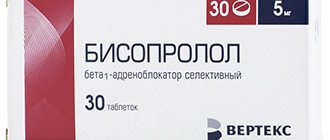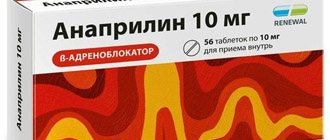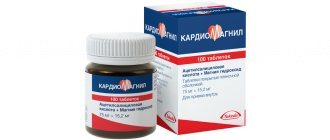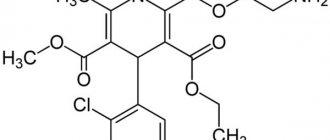Often, during routine examinations, people are diagnosed with high cholesterol. Not everyone thinks that if its amount exceeds the norm, then this is a direct threat to cardiovascular disorders. Doctors prescribe a special diet and a set of physical activities, but such measures do not always lead to good results. Then Atorvastatin comes to the rescue. Practice has proven that the medicine produces an excellent effect in combination with therapeutic nutrition.
pharmachologic effect
Atorvastatin tablets have hypocholesterolemic properties. The drug reduces the rate of production (completely inhibits the process) of the enzyme responsible for converting HMG-CoA into mevalonate, which is later converted into fats. The decrease in the level of lipoproteins and cholesterol in the blood plasma after the use of Atorvastatin is due to a decrease in the volume of cholesterol produced by liver cells and a decrease in the activity of HMG-CoA reductase.
Atorvastatin reduces the risk of ischemia and reduces mortality rates in patients of all age groups who have had myocardial infarction. During a course of treatment, the likelihood of developing fatal/non-fatal stroke, cardiovascular pathologies, and fatal lesions of the cardiovascular system decreases.
Application
Indications for use: what is the drug prescribed for? What does Atorvastatin help with?
Hypercholesterolemia
The use of Atorvastatin is justified as a dietary supplement when an increase in cholesterol is detected, as well as:
- increased LDL (low-density lipoprotein), apolipoprotein B and triglycerides;
- to increase the level of HDL cholesterol (high-density lipoprotein) in patients with primary hypercholesterolemia (hereditary heterozygous and non-hereditary hypercholesterolemia), combined (mixed) hyperlipidemia (Fredrickson type IIb and III), elevated plasma triglyceride levels (Fredrickson type III);
- when diet does not have sufficient effect.
Atorvastatin is recommended for use in order to lower total cholesterol and LDL cholesterol in people with homozygous hereditary hypercholesterolemia, if there is no sufficient response to diet or other non-drug measures.
Prevention of complications from the heart and blood vessels
Atorvastatin is prescribed to patients who do not have clinical signs of heart and vascular disease, with identified/absent dyslipidemia, but who have multiple risk factors for the formation of coronary artery disease (coronary heart disease) - smoking, high blood pressure, diabetes mellitus, low HDL.
The drug is used for the following purposes:
- reducing the risk of fatal coronary artery disease and non-fatal myocardial infarction;
- minimizing the likelihood of stroke, angina pectoris, hospitalization for the development of CHF (chronic heart failure).
Use in childhood (patients 10–17 years old)
The administration of Atorvastatin in childhood is recommended as an addition to the diet used to reduce cholesterol and apolipoprotein B levels if there is a history of heterozygous hereditary hypercholesterolemia.
The medicine is approved for use in girls only after the onset of the first menstruation
The drug is used if, despite dietary nutrition, the child maintains the following indicators:
- LDL exceeds 190 mg/dl;
- LDL exceeds 160 mg/dL, but if the patient has a predisposition to developing heart and vascular diseases at the genetic level or there are two or more factors that increase this risk.
What does Atorvastatin help with?
Atorvastatin is a medicine that lowers blood cholesterol levels. The drug is often used for both primary and secondary prevention of cardiovascular complications. Atoris is exactly such a drug. The main active ingredient is atorvastatin. Like other statins, it suppresses the effect of an enzyme involved in the initial stage of cholesterol formation. Bad cholesterol forms atherosclerotic plaques on the walls of blood vessels, obstructing blood flow. The medicine stops cholesterol synthesis. Plaques do not grow, and atherosclerosis does not progress.
Taking this drug reduces the risk of a heart attack and prevents the development of angina pectoris. It is prescribed to patients with acute coronary syndrome. In people with ischemic stroke, Atorvastatin slightly reduces the risk of recurrence of cardiovascular changes.
Contraindications
The use of the medicine in adult patients will be contraindicated in the following cases:
Tablets that lower blood cholesterol
- hypersensitivity to the components of the drug;
- liver pathologies in the active stage;
- an increase in the activity of liver transaminases by three or more times of unknown origin;
- women of reproductive age who do not use contraceptives; lactation;
- children under 18 years of age - the exception is the treatment of heterozygous hereditary hypercholesterolemia;
- simultaneous use with HIV protease inhibitors.
A woman can take Atorvastatin only if it is known for certain that she is not pregnant. Relative contraindications are:
- chronic alcoholism;
- history of liver disease;
- complex disorders during metabolic reactions, electrolyte balance;
- disturbances in the functioning of the endocrine system;
- arterial hypotension;
- hemorrhagic form of stroke;
- sepsis;
- uncontrollable epilepsy;
- extensive surgical interventions;
- injuries.
Gestation period and breastfeeding
The use of the drug is prohibited during the entire period of pregnancy. There have been several reports of children being born with congenital anomalies from mothers taking Atorvastatin. Conducted studies (on animals) have shown the presence of a toxic effect of the HMG-CoA reductase inhibitor on the reproductive function of females.
When a pregnant woman takes the drug, there is a risk of a significant decrease in the volume of mevalonate produced, which is a precursor of cholesterol. It is worth understanding that atherosclerosis is a chronic disease that is not characterized by rapid development. For this reason, temporary discontinuation of Atorvastatin does not pose a significant risk in the presence of primary hypercholesterolemia.
Doctors do not know whether the active substance itself and its metabolites penetrate into a woman’s breast milk. But in the course of studies on female animals, it was found that the concentrations of atorvastatin and its metabolites are the same in both blood plasma and milk.
Important! The use of Atorvastatin should be discontinued during the entire period of breastfeeding. If there is a need to start treatment with this drug, you will need to stop breastfeeding.
Who is Atorvastatin useful for?
Statins are indicated for people at risk. Healthy patients are not recommended to take them as prophylaxis. The issue has not been fully studied, and there are no effective clinical trial data. The drug is prescribed when diet, exercise, or other weight loss measures have not helped.
The main diseases for which atorvastatin is prescribed are:
- combined hyperlipidemia;
- primary or hereditary hypercholesterolemia;
- familial endogenous hypertriglyceridemia.
But the main purpose is cardiac ischemia (CHD).
In pregnant women, Atorvastatin crosses the placenta and reaches high concentrations in the fetal liver. It was not tested in humans, but in rats it was established that the survival rate of offspring was reduced. Among the surviving rodents, a decrease in body weight and developmental delays were noted.
If Atorvastatin is used simultaneously with antibiotics and clarithromycin, myopathy may progress, and the concentration of the substance in the blood plasma can increase by 40%.
Antacids - medicines used to treat the stomach - reduce the concentration of atorvastatin in the blood by 35%.
Directions for use and dosage
The instructions for use indicate that treatment with Atorvastatin should be preceded by a special diet that helps lower blood cholesterol levels. It will need to be adhered to throughout the entire period of use of the product.
The initial dosage (recommended by the manufacturer) is 10 mg. If necessary, it can be increased to a maximum of 80 mg. Atorvastatin should be taken strictly at the same time of day, regardless of meals.
How long to take the product? The duration of the course is selected individually and depends on the diagnosis.
The development of the therapeutic effect should be expected after 14 days from the start of treatment. Its maximum is observed after 4 weeks of regular use, and for this reason it is advisable to review and change the initial dosage after a month from the start of therapy. The drug must be taken without interruption throughout the entire course prescribed by the doctor.
Dosages depending on the diagnosis:
- Hereditary/non-hereditary hyperlipidemia, combined dyslipidemia. The initial dosage (according to the annotation) is 10 mg daily. It can be increased to 80 mg.
- Homozygous familial hypercholesterolemia. The active substance range is 10–80 mg. The drug is prescribed as an additional drug to complement the prescribed treatment, or if therapy with other drugs is not possible.
- Heterozygous hereditary hypercholesterolemia in childhood (children 10–17 years old). The starting dosage is 10 mg per day. The maximum recommended is 20 mg per day. The rate is calculated individually and depends on the final goal. The dosage needs to be changed at intervals of 4 weeks, sometimes more.
- Prevention of the development of cardiovascular complications. In order to prevent possible complications, a dosage of 10 mg is used. If necessary, it can be increased.
Special patient groups:
- With kidney failure. Kidney pathologies do not affect the concentration of atorvastatin or reduce the level of LDL in the blood plasma. In this regard, no adjustment of the initial dosage is required.
- With liver dysfunction. The dosage is calculated individually, due to the slow rate of elimination of the active substance from the body.
- Elderly patients. Patients over 70 years of age do not need dosage adjustment.
Concomitant use of lipid-lowering drugs
Atorvastatin can be used with bile acid sequestrants. Concomitant use of HMG-CoA reductase inhibitors with drugs from the fibrate group should be done with caution.
Other combinations
Dosage in patients taking Itraconazole, Cyclosporine, Clarithromycin and protease inhibitors is discussed here. The recommendations will be as follows:
- Concomitant use of Cyclosporine and HIV protease inhibitors or hepatitis C virus inhibitors with Atorvastatin is prohibited.
- In patients with HIV infection undergoing treatment with the combination of Lopinavir + Ritonavir, Atorvastatin is prescribed with caution. The dosage should be minimal.
- Patients taking Itraconazole, Clarithromycin, as well as HIV-infected patients (if they are receiving the following drug regimens: Saquinavir + Ritonavir, Darunavir + Ritonavir, Fosamprenavir, Fosamprenovir + Ritonavir) should receive a dose not exceeding 20 mg.
- When undergoing treatment with HIV protease inhibitors Nelfanavir or Boceprivir (hepatitis C virus protease inhibitor), the dosage of Atorvastatin is limited to 40 mg.
Combining alcohol and statin drugs
Biotransformation of lipid-lowering drugs occurs in the liver, while the drugs undergo presystemic elimination (first-pass effect) - entering from the intestine directly into the liver and only then into the systemic bloodstream.
The liver is designed in such a way that when drinking alcoholic beverages, all functions are inhibited, except one - the processing and neutralization of ethanol. The body tries to neutralize the effects of alcohol as quickly as possible and rid the body of alcohol toxins.
When statins and alcohol simultaneously enter the body, hepatocytes (liver cells) completely switch to the rapid processing of ethanol and its breakdown products. Biotransformation of statins becomes an additional burden.
Unprocessed pharmacological substances are concentrated in the liver, and the therapeutic effect is lost, but their aggressive effect is affected. Because of this, when there is a correlation between alcoholic beverages and hypocholesterol medications, side effects from the medication occur. Alcohol intoxication, in turn, increases the symptoms of undesirable effects.
In chronic alcoholism, some hepatocytes are inoperative. Simultaneous processing of ethanol and statins by the liver becomes impossible. Considering that a contraindication to statin treatment is exacerbation of chronic liver diseases, there is a risk of developing liver failure.
Alcohol increases blood pressure and heart rate, which is especially dangerous when taking lipid-lowering drugs.
Ethanol increases the load on the kidney apparatus. When combining statins with alcohol, the active substance of the medication and the breakdown products of alcohol are retained in the body and poison the kidneys.
Alcoholic drinks irritate the mucous membrane of the gastrointestinal tract, statin drugs, like chemicals, enhance the ulcerogenic (corrosive) effect, which provokes the development of erosive and ulcerative defects.
Side effects
Various side effects may occur during use. These are:
- dizziness;
- headache;
- lack of coordination;
- neuropathy;
- asthenic conditions;
- hallucinations;
- spasms;
- loss of appetite in the direction of its decrease;
- nausea, vomiting;
- increased gas formation;
- sudden weight loss;
- constipation;
- attack of pancreatitis;
- gastritis;
- ulcerative pathology;
- cholestasis;
- colitis;
- convulsions;
- myositis;
- muscle spasms;
- joint pain;
- circulatory disorders;
- itching of the skin;
- hair loss;
- dermatitis;
- hives;
- bronchospasm.
Overdose
Patients taking Atorvastatin must strictly adhere to the dosage recommended by their doctor. Otherwise, an overdose of the active ingredient cannot be ruled out. Against this background, the following side effects may develop: myalgia, fungal pathologies, increased fatigue, memory impairment.
In case of overdose, the patient is treated symptomatically; there is no specific antidote
Expert advice
Atorvastatin is produced by many pharmaceutical companies, but not all of them show good results. Cheap analogues often have an annoying property - frequent side effects. It is difficult to understand the production technology of companies that are not drug developers. They sometimes carefully hide secrets.
Doctors recommend choosing only those medications that have positive results of therapeutic equivalence analysis. Atoris, for example, a studied analogue, is popular with doctors. “Faceless” tablets priced from 100 to 200 rubles should raise concerns: side effects can strike with enormous force, and the desired therapeutic result will never be achieved. When choosing a drug, it is better to trust your doctor. Most of them still want to cure the patient, and only they can know which medicine is suitable in a particular case.
Reviews
Reviews from cardiologists are numerous and generally positive. Specialists often prescribe the drug to their patients as a prophylactic agent. Atorvastatin prevents the development of complications from the cardiovascular system in patients with impaired cholesterol levels. Patient reviews are varied. There are both positive and negative responses.
Valentina Semyonovna, 65 years old: The doctor recommended taking Atorvastatin. I took the product for about three weeks. During this time, the size of cholesterol plaques decreased, the condition of blood vessels improved, and blood cholesterol returned to normal. The doctor said that the progression of atherosclerosis had stopped. And in order to consolidate the therapeutic effect, she prescribed another course of medication for preventive purposes.
Olga, 35 years old: I was diagnosed with high cholesterol. The doctor prescribed a course of Atorvastatin. But the product didn’t work for me. While taking it, nausea and heartburn appeared. I had to replace it.
Elena Valerievna, 45 years old: Atorvastatin was recommended to me by my attending physician as a replacement for Warfarin. I read a lot of negative comments about him. I was afraid there would be problems too. But I had nothing. But my cholesterol levels returned to normal. I took three two-week courses with a break of a month.
Analogs
All generics of atorvastatin are available in the form of film-coated tablets.
The price of the original drug varies from 120 to 580 rubles.
- Atorvastatin Teva has moved a little higher in terms of monitoring, and the cost is lower than the original drug.
- The drug Atoris deserves more attention, but its price is from 300 to 1000 rubles.
- Tarvocard, according to experts, is more effective than Atoris, but its cost reaches 1,400 rubles.
- The undisputed leader among doctors is Liprimar. A reflection of his primacy can be seen in the price tag: from 600 to 2500 rubles.








